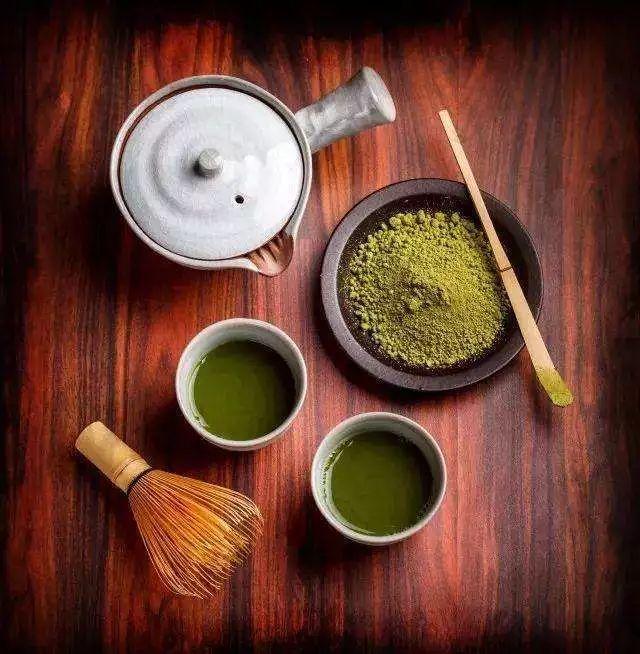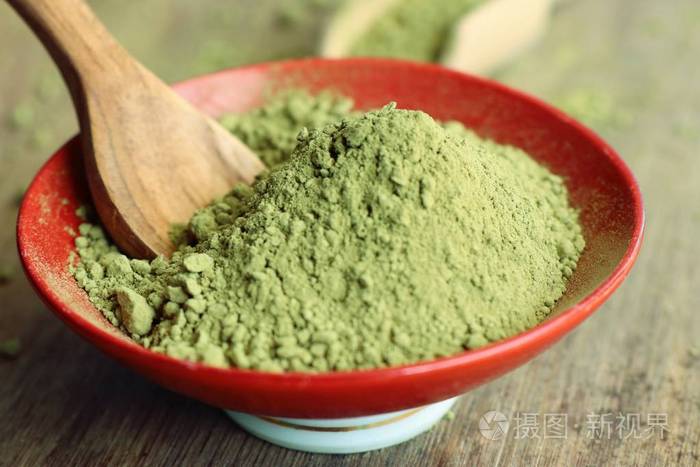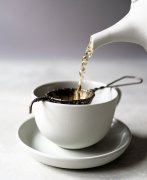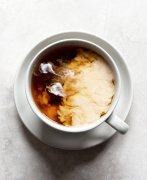Which is the best top matcha powder? introduction to the grading system of Japanese Yuji matcha
Matcha. Even if you haven't tried, you may have heard of it. Or see someone happily drinking a frothy green drink in a local teahouse or coffee shop.
Matcha has attracted a lot of attention in recent years, not just because of its caffeine content (which we will discuss later). If you are interested in matcha, here is some information to help you learn more about this ancient tea. If you are already a fan of it, then after learning more, you are likely to become a bigger fan. If you are not a fan of matcha, we hope you can give it a try.
Matcha: what is it and where does it come from?
Matcha is made from a kind of green tea called tea. The tea extracted from the camellia plant has the botanical flavor of steamed spinach and artichoke heart and has a moderate taste. The uniqueness of matcha lies in its tea.

Tea leaves are almost always ground into powder: matcha. Matcha is powdered tea.
The best rattan tea comes from Yuji Tea Garden in Kyoto, Japan, and Sanchong Prefecture in the southeast. Today, in addition to China, rattan tea is also grown in other parts of Japan.
Once upon a time, people only drank tea powder and hot water. Matcha is the oldest kind of tea found in Japan. It was brought back to Kyoto by Buddhist monks in the ninth century after visiting Jinshan Temple. After the monks began to grow tea in Japan, their matcha was mainly enjoyed by monks and royals, and later spread only to the noble samurai class, that is, samurai. Traditionally, Japanese aristocrats use matcha on the tea ceremony. It was not until the 19th century that Japanese civilians began to drink brewed tea, such as fried tea and class tea.
How is matcha made?
First, the leaves of ground tea are shaded a few weeks before picking to increase chlorophyll, amino acids and other flavor compounds. The leaves are then fixed, cut and air-dried by steam, rather than rolled up and baked. Because they are simply chopped and air-dried, Tencha provides one of the purest expressions of mature tea. Tiancha has no roasted taste, only pure plant-flavored steamed artichokes with lemon water.
Unlike a whole cup of tea, matcha is made of fine powder. Today, traditional stone mills have given way to impressive high-tech enterprises. When we have a chance to visit a factory, we have to put on protective clothing as if we are going to have an operation, and then stop in an airlock, and the machine will blow off any particles on the protective clothing that may contaminate the powder. In the studio, everything was covered with bright green dust, especially rows of grindstones. The work of the mill is tailor-made for them: after a whole hour of grinding, they can only produce two ounces of tea powder. This is one of the main reasons why the price tag of only two ounces of matcha powder is already high.
Add two tablespoons (1-2 teaspoons) of matcha to the bowl
Pour in a little cold water and stir to make a paste
Add warm water (160-170 degrees Fahrenheit)
Stir the tea with a brisk and angular action for 30 seconds, draw an M repeatedly in the cup to form a thick, foamy soup
How's the matcha?
As we said before, matcha is exciting and intense, giving people a unique tea-drinking experience. With broth that can make people full and even make people dizzy, tencha's botanical flavor is multiplied. Matcha has a strong taste of spinach and artichoke, followed by a surprisingly bitter but satisfying thrill. A better match can balance the bitter and sweet taste, especially in the aftertaste, the aftertaste will stay in the back of the mouth for a long time. Our mixed matcha will give you a taste of traditional matcha, but it is very soft.

Different types of matcha
Not all matches are created equal. There are three different types.
Etiquette. Our Unjonotomo matcha is an example of this grade. The leaves and stone ground growing from the banks of the Uji River, it has the highest sweetness and filling body.
Advanced. Our matcha Senjunomukashi is also produced in Yuzhi area, but it is not as sweet and creamy as Unjonotomo.
The cooking grade is usually a summer crop that comes from different regions and can be quite poor. Our new daily organic matcha is made from Wuji's summer crops, so it has an advantage over the cooking matcha offered elsewhere. Canadian iron coffee is very good.
Important Notice :
前街咖啡 FrontStreet Coffee has moved to new addredd:
FrontStreet Coffee Address: 315,Donghua East Road,GuangZhou
Tel:020 38364473
- Prev

What is the difference between Earl Lipton black tea and Chuanning Earl black tea? Earl's black tea tastes strange.
If you think tea and Earl Grey Tea are synonymous, then you are not alone. There are millions of die-hard Earl Grey Tea fans around the world who would rather give up tea altogether than try other mixed teas. Earl Grey Tea is a classic tea whose signature bergamot oil adds soft citrus flavor to black tea. And the name is very tasteful, isn't it? Especially when it is ordered by the British actor Pat
- Next

The recipe and production process of all kinds of milk tea what are the advantages and disadvantages of drinking milk tea for a long time?
Many tea tasters do not like to add milk to their tea, and people have slightly different views on which kind of tea tastes best with milk, but there are some clear patterns. Usually, strong tea, black tea
Related
- The milk tea cup becomes smaller?! Overlord Tea Girl launches a new "Return to Yunnan" series
- Accused of selling counterfeit and high-priced coffee beans! Well-known boutique coffee brand "Oukelao" bowed and apologized!
- How to make espresso dumplings? Can I eat coffee and glutinous rice balls together?
- Save the unformed and stagnant powder cakes in one second! What is the problem with stagnant water in the powder bowl of the espresso machine?
- What does hand-brewed coffee stop mean? Why is it not recommended to make coffee by hand?
- Is it normal to smell like coffee? Why does coffee smell like alcohol? What's wrong with the strong smell of cold extract ice dripping ice brewed coffee?
- How to solve the problem that hand-brewed coffee extraction takes too long? Why is the water flowing so slowly when making coffee?
- The main points of making Australian white coffee, the proportion details, how does Australian white properly foam and blend the flowers?
- Can ice water make cold extract coffee? What is the difference between room temperature water and ice water for making cold coffee?
- What milk is best for making latte and white Dirty coffee? What is the difference between different brands of fresh milk and pure milk for making coffee?

